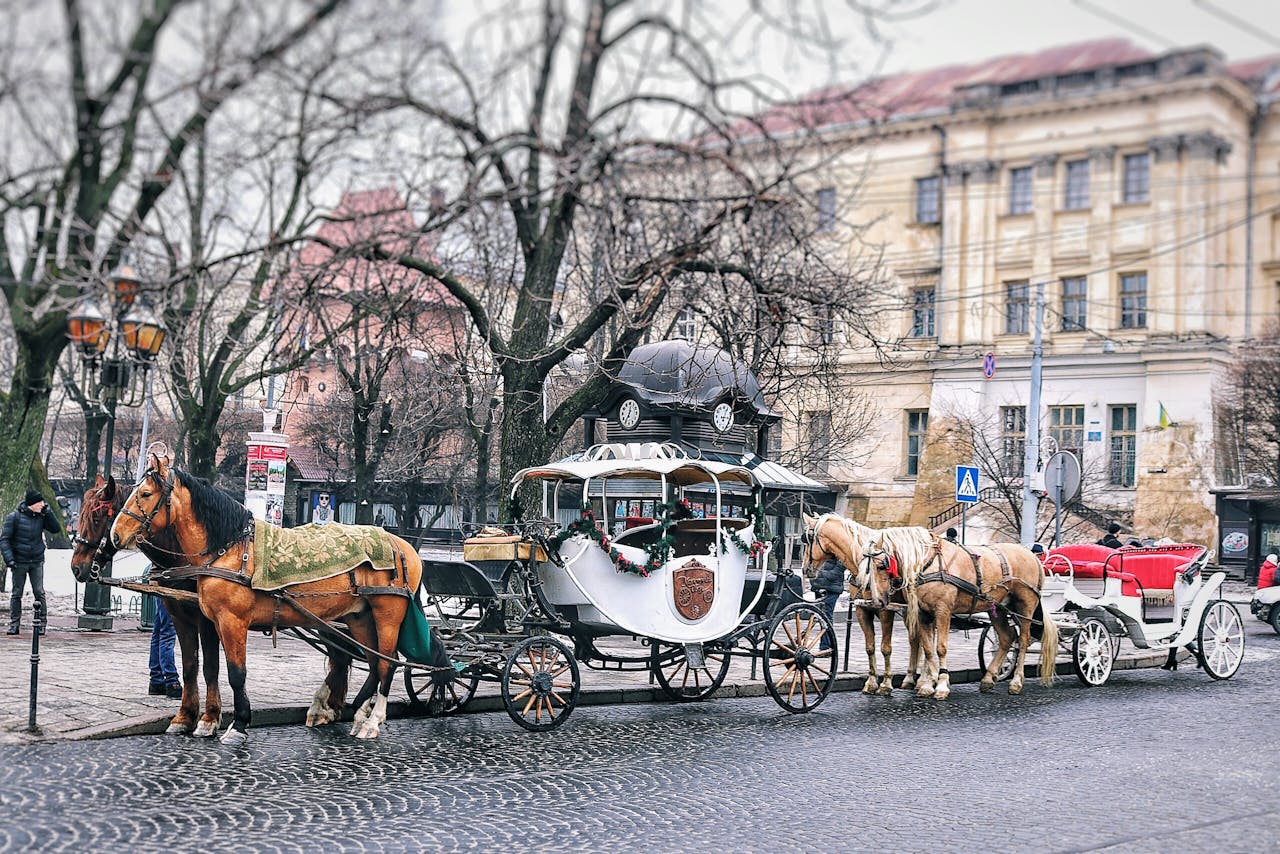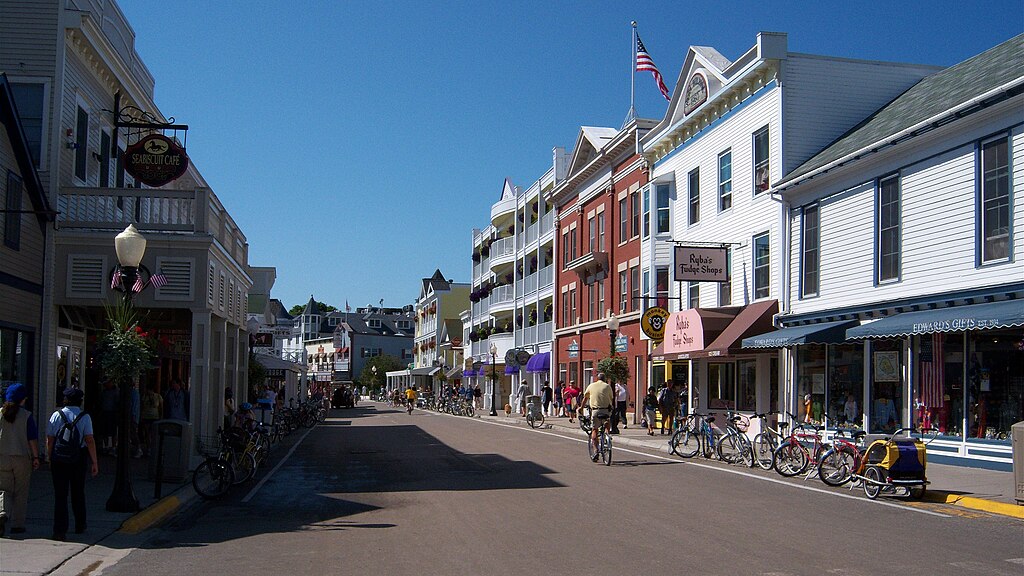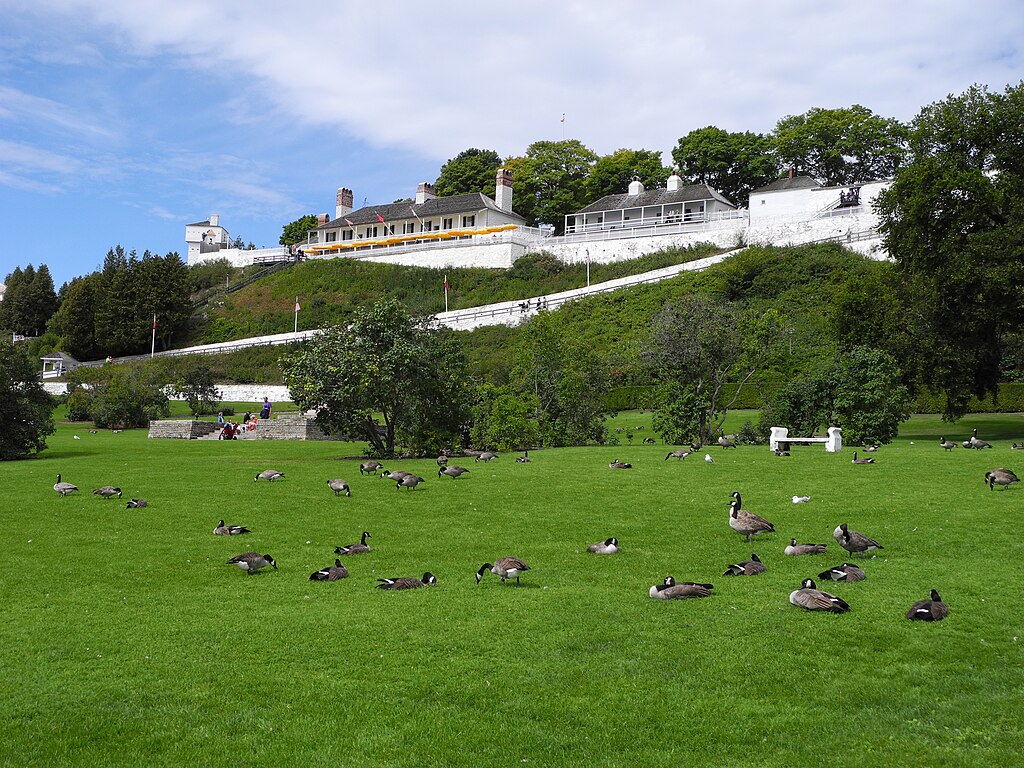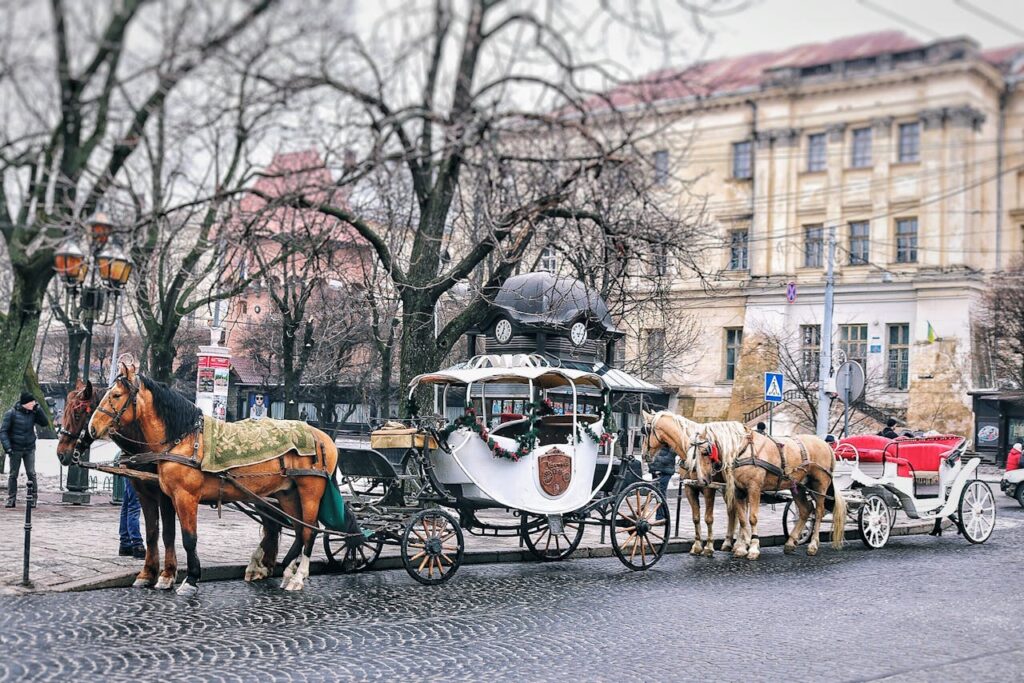
There is a place in America where the future never quite caught up. Where silence has its own soundtrack, the rhythm of hooves against stone, the whisper of wind off the lake, the laughter of people who are not rushing anywhere.
While the rest of the world chases electric engines, faster connections, and deliveries that arrive before we even blink, one small island in Michigan chose something different. It chose stillness. It chose presence.

Welcome to Mackinac Island, a rare corner of the modern world that moves at the speed of life itself. Here, motor vehicles are banned, Amazon packages arrive by horse drawn carriage, and time feels less like a clock and more like a heartbeat.
Where Time Took a Breath and Stayed
Most people measure progress by how fast they can move. But on a small island in Michigan, progress looks different. It lives in stillness, in the careful preservation of what once was. Mackinac Island rests in the blue cradle of Lake Huron, where the waters of the Upper and Lower Peninsulas meet. It covers just over four square miles, wrapped in limestone cliffs and forested trails that lead to hidden coves. Visitors arrive by ferry, watching the mainland fade as the island’s wooden docks, pastel hotels, and quiet streets come into view. The moment your feet touch the harbor, the air feels different, as if the noise of the world has been left behind.
More than eighty percent of this island is protected under Mackinac Island State Park, one of the oldest parks in the United States. It began its story in 1895 when the federal government returned the land from its status as the nation’s second national park. Within this living sanctuary stand natural monuments carved by time itself, such as Arch Rock and Fort Holmes, each holding stories older than the country they belong to. Paths wind between cedar trees and bluffs that overlook endless water, creating the kind of silence that teaches rather than empties.

At the heart of town rises Fort Mackinac, built in the eighteenth century and still standing in full dignity on its bluff above the harbor. Its whitewashed walls and restored barracks remind every visitor of the soldiers who once looked out over the Great Lakes, unaware that their post would one day become a museum of endurance. Around it, the island unfolds like a preserved painting of Victorian grace, with cottages and hotels that open their wide windows to the lake breeze. These buildings remain untouched by modern sprawl, held by legal covenants that protect their form and soul.
According to the National Park Service, Mackinac Island stands as a National Historic Landmark for its rare continuity, for its ability to hold both history and life without compromise. It is a place where design bowed to nature instead of conquering it, where growth meant preservation rather than replacement. This island is not frozen in time. It is breathing slowly, deliberately, reminding us that when we choose to honor what lasts, we do not stop evolving, we evolve with purpose.
When Noise Tried to Replace Nature
Every invention comes with a promise. The automobile promised freedom. It promised speed, connection, and a way to shrink the world. But on Mackinac Island in the late nineteenth century, that promise sounded more like a threat. The first time a “horseless carriage” rumbled through its narrow streets, the island’s quiet rhythm was broken. Horses reared in fear, people shouted in alarm, and what was once a peaceful road became a scene of chaos.
In 1898, the residents made a choice that most of the world would never dare to make. They banned motor vehicles entirely. What began as a practical measure to protect people and horses slowly became something deeper. As the rest of Michigan turned into the car capital of the world, Mackinac decided its identity would be peace, not progress at any cost. It chose to listen to the sound of hooves instead of horns, to keep its streets alive with conversation rather than combustion.

Even today, the island holds to that decision. There are a few exceptions, of course. One police car, two fire trucks, and an ambulance stand ready for emergencies, but everything else moves with patience and purpose. Mail, groceries, even wedding parties travel by horse drawn carriage. It is not just a custom. It is a statement that speed does not equal success.
The Mackinac State Historic Parks website describes it best: “One of the most enduring memories of your visit here is the lack of motor vehicles. It’s what keeps the historic character of this National Landmark alive.” The island’s stillness is not emptiness. It is wisdom, the kind that whispers that not every sound belongs in paradise.
The Island That Teaches You to Slow Down Inside
Some places are not just destinations but mirrors. Mackinac Island is one of them. People come for the horse carriages, the lake views, and the feeling of stepping into a simpler century, but what they often find is something that speaks quietly to the spirit. The stillness of this island has a way of reflecting the restlessness we carry within. It shows us, by contrast, how loud our minds have become and how rare it is to be where our feet are.
As you walk through its shaded trails or stand before the blue stretch of Lake Huron, something in you begins to settle. There are no car engines to rush you forward, no horns pressing urgency into your thoughts. The hum of daily life fades until you can hear again the small sounds that usually go unnoticed: the rhythmic sound of hooves, the brush of wind through the trees, the whisper of waves that move in their own time. You begin to feel how much of your life has been spent hurrying past moments like these.

Mackinac Island does more than preserve history. It invites you to reclaim presence. It is not an escape from the modern world but a reminder of how to live within it without being consumed by it. In a time when distraction is the default, this place feels like a teacher. It reminds us that peace is not the absence of movement but the presence of meaning. The island’s lesson is simple yet profound: when life races ahead, slowing down is not falling behind. It is finally catching up to yourself.
Where Community Moves at the Speed of Heart
In most cities, people pass each other like strangers in a race. Conversations happen between screens, and smiles are often traded for glances at the time. On Mackinac Island, the rhythm of life makes that impossible. Here, movement is shared. The pace of a horse drawn carriage, the laughter of cyclists, and the quiet greetings between shopkeepers create a kind of music that no machine could compose. People do not just live beside one another; they live with one another.
Without the rush of cars or the distance of noise, relationships take on a different shape. The delivery driver knows the innkeeper by name, the park guide recognizes returning visitors, and even the horses are treated as members of the community. There is an unspoken agreement on this island that time belongs to everyone. When the world slows down, people begin to notice one another again. They listen longer, speak softer, and remember what it feels like to truly connect.

This sense of community is not accidental. It is born from a shared understanding that life’s value is not measured in how fast we get somewhere, but in who we become along the way. Mackinac Island, in its quiet defiance of modern haste, is a living proof that progress does not always mean separation. Sometimes it means closeness. Sometimes it means remembering that the most advanced thing we can do is care.
The Wisdom of Still Places
Mackinac Island is not a relic of the past. It is a teacher of the present. In its quiet streets and gentle rhythms, it offers a message the modern world has almost forgotten. Progress is not only about moving faster. True progress is about moving wisely. It is about remembering what makes us human in the first place.
Every sound on this island tells a story. The clip clop of hooves is a heartbeat, steady and grounded. The laughter of travelers carries the reminder that joy does not require constant motion. Even the silence between moments speaks, inviting us to pause long enough to hear ourselves again. Mackinac Island stands as a living reminder that stillness is not stagnation. It is strength. It is awareness. It is life unfolding at its natural pace.

In the end, this island does not ask us to reject the modern world but to walk through it differently. To listen more. To rush less. To measure success not by how much we accumulate but by how deeply we feel alive. Mackinac Island does not simply preserve history. It preserves humanity. And in a time when noise is everywhere, that might be the most revolutionary act of all.
Featured Image from Pexels
Loading...

